Acceleration AMD A10-5800K.
Without kewood
So the autumn time came, the weather no longer indulges us the summer sun, and the rains go all the cup and the bowl. At such days, many overclocking lovers remember their hobbies. Some after hot summer set up their computers for winter frequencies, others are preparing for the autumn upgrade and expect new components. So we are waiting for new revisions of the components to experiment with the iron already available in the overclocking cabinet.
Previously, we met two processors from the AMD APU lineup and came to the conclusions that the younger AMD A4-5300 is the foundation for a very good office system, and who will overclock the office PC? Oh yeah, I'll be! But now it is more interesting for us to engage in overclocking the senior AMD A10-5800K and its unlocked multiplier will contribute to this. Today we will try to answer the question: Does it cost to overclock the multimedia center on the AMD platform?
For all experiments with the processor, the following test bench was used:
- Motherboard: Gigabyte GA-F2A85X-UP4 (AMD A85X, FM2);
- Processor: AMD A10-5800K;
- COOLING CPU: NOCTUA NH-L9A;
- Thermal interface: NOCTUA NT-H1;
- Video card: Radeon HD 7660D;
- RAM: TRANSCEND AXEMAM TX2400KLU-4GK
- Drive: Seagate ST3250410AS 250 GB;
- Power supply: Seasonic X-1250 GOLD (SS-1250XM);
- Operating system: Microsoft Windows 7 x64 Ultimate SP1;
- Driver version: Catalyst 13.1.
We comment on some items of this stand. As you can see, there are components not quite suitable for use in the compact HTPC. We are talking about the motherboard Gigabyte GA-F2A85X-UP4 ATX format. Its choice is justified by the presence of a full-fledged BIOS, in which there are no restrictions in acceleration functions, there is a six-phase processor power system. In general, the mother's fee will not be a bottleneck for our experiments with A10-5800K. NOCTUA NH-L9A will be used as a cooling system. You can use more powerful tower coolers, but we focus on creating an HTPC system for which Noctua NH-L9A is a great option. The transcend axeram TX2400KLU-4GK is used as RAM, as we have already found out earlier when using AMD APU, the frequency of RAM has a big impact on performance in 3D applications.
Before starting experiments, we once again read the screenshots of CPU-Z and GPU-Z programs. Frequencies are fixed in TURBO CORE mode.
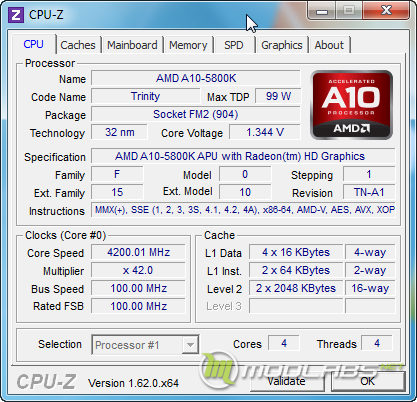
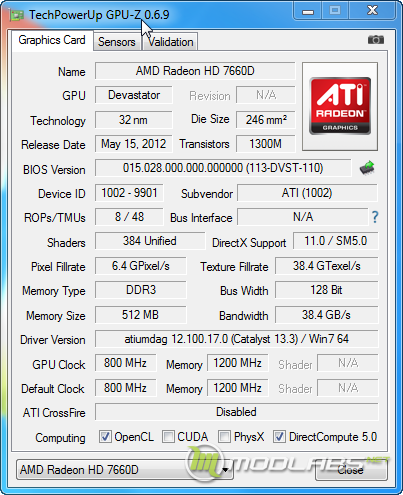
Now you can begin acceleration of the storage processor on the cooler of the NOctua NT-H1, which is initially declared for the maximum heat dissipation in 65Vatt. We are submitted frequency in 4300MHzAfter zooming to 4400 MHz began to appear errors in OCCT Perestroïka. An attempt to raise the voltage led to a processor temperature jump to 74 ° C and the test again flew with an error, but already different. As it turned out, the RAM controller could not ensure the performance of memory at 2400 MHz, with a decrease in 2133 MHz errors were not observed. But to lose the memory frequency for the sake of 100 MHz for the processor on this system is absolutely not recommended, the benefit from such an acceleration will be with a minus sign.
The GIGABYTE GA-F2A85X-UP4 motherboard allows you to set the GPU frequency in 1 MHz increments. But as it turned out in practice, acceleration is carried out by the following steps: 800-844-894-950-1013-1086-1169-1267 MHz and so on. The frequency goes to the next step after the value in the BIOS exceeds the specified frequencies to 1 MHz. When using the Noctua NT-H1 cooler, the frequency managed to increase 950MHz.This brought ten percentage of 3DMark 2006.
Further acceleration prevented a high temperature, we began to think about how to improve the cooling of the processor without changing the main components of the stand, namely the processor and cooler. Noctua NH-L9A did not want to change, as it was chosen specially. NOCTUA NT-H1 was used as thermal paste, there was no more efficient in the presence. Replacing the processor for less productive, the more not considered. And suddenly, we realized that the APU cover is an excess link in the cooling chain. The idea came, you need to implement!
To remove the cover from the processor, we need the usual blade and a large stock of courage, I thought about two days I needed to do this and whether we would get the result. It is necessary to use completely new blades that have not previously been made any operations, it will reduce the chances of damaging the processor.
Before the start of the scalping process, it is so called this operation in overclockers of circles, you need to prepare a well-to-work tool, to maximize the blade to prevent the paresis of your precious fingers. Good lighting will be an excellent advantage and will allow you to control the process, and not scalping the processor in the blind.
With one side of the processor cover, there is a through hole. It is used to compensate for pressure when changing temperatures. Thanks to him, it is possible to evaluate in advance how much you should deepen the blade.
I began to cut through the layer of connecting sealant from the end. I recommend not deepening the blade completely, and gradually cut the sealant to the width of the millimeter. In some articles, we recommend tilting the blade to the lid, I initially tried to keep the blade completely smoothly, but as close as possible to the processor lid.
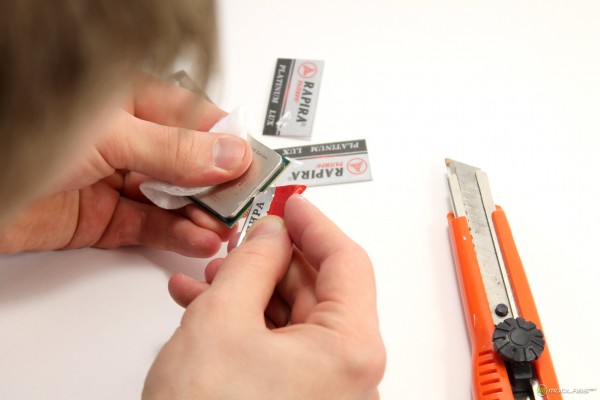

After the first navigation on all sides, I decided to cut the corners. As it turns out later, there are few SMD elements in the corners, so this action is much safering the blades on the sides.
Next, begin to deepen the blade, the main thing is not to hurt SMD elements, and we pass another circle on the sides. At this time, the sealant can start peeling. Be careful, it needs to be immediately removed, so that he would not interfere in the future.


Next, the stationery knife is trying to pry a cover from the corners. Carefully look at the place where the sealant did not cut through and holds the cover. These places need to be cut in a separate order;).
Again, we use the lid, it is very important to reliably fix your hands and prevent the knife sloping. The final removal step is better to produce hands.In my case, one side remained with a completely cut sealant, I did not force it to cut it, it was simply burst into the cover of the covers from the crystal.
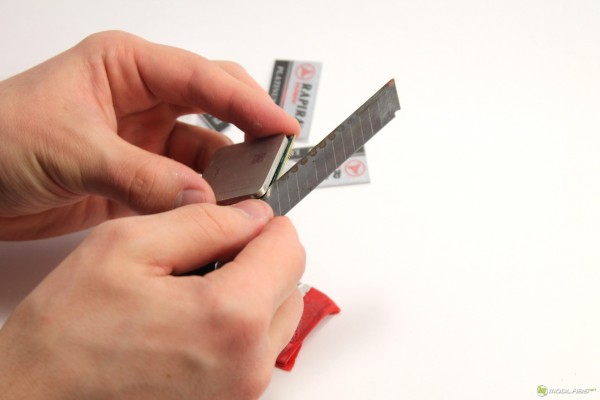

After removing the cover, my processor's substrate was immediately chained, carefully studied that all the elements on the spot and the textolite substrate was not damaged, I continued the operation of the photo model :).


As it turned out, the processor cover is satisfied with the massive and commensurate in thickness with the processor.

During the operation, the processor's legs were curved, probably I really fixed the processor in my hands. The legs are aligned with a stationery knife.

As a thermal interface between the lid and crystal, the thermalcaste is used, which is a little reminded by a slightly dried KPT-8. Cleaning the crystal occurs without much difficulty.

And here it is, completely undressed and purified AMD A10-5800K. The sealant layer was cut almost in half, perhaps it would be a good doctor 🙂 …

If you are preparing to repeat the AMD A10-5800K processor scalp, we recommend paying special attention to the photo below. It can be correctly appreciated by the proximity of the SMD location of the elements to the layer of the connecting sealant. That is why it is worth a very gently to carry out the blade on the sides.
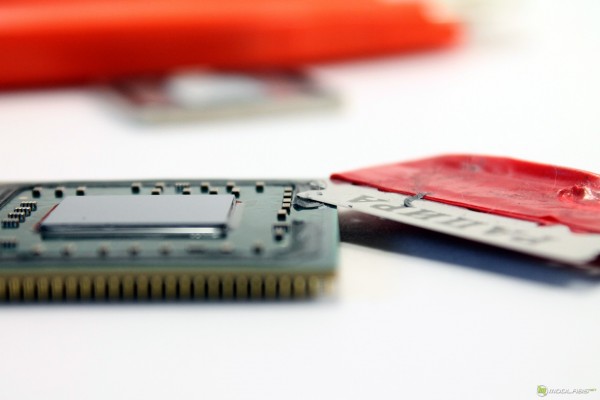
Before installing the processor, I decided to protect the crystal from chips. This helped me well known to all Extreme overclockers Bostik.
Noctua NH-L9A cooler was clearly not ready for the disappearance of the heat dissipation cover. The protracted bolts were dragged to the stop, but the cooler, frankly, dangled on the motherboard
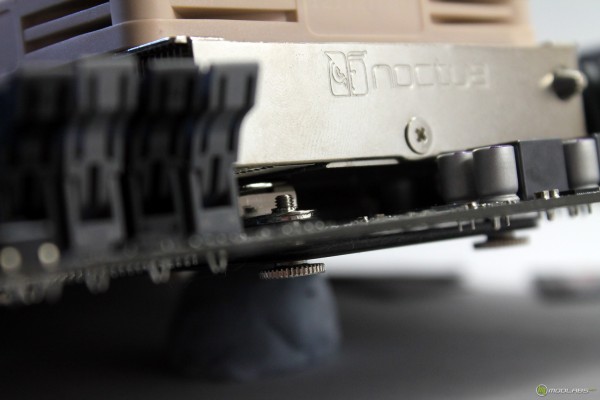
The situation was saved by washers and rubber gaskets found in an overclocker.
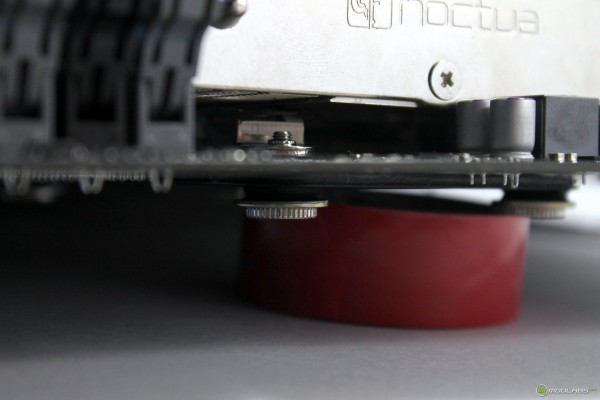
After the operations made, the clamp of the cooler to the crystal was just perfect. Almost the whole thermalcaste was extruded as superfluous.
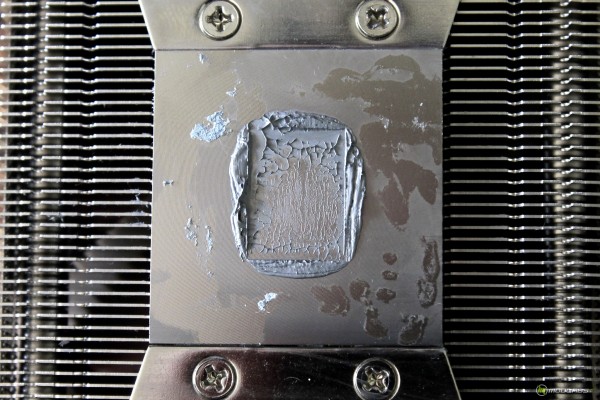
As a result, when using the Noctua NH-L9A cooler, the temperature of the processor under the OCCT PereStroika test fell on 9 ° C. The result is simply excellent, on a more productive cooling it would be even more noticeable. I immediately made an acceleration attempt, but when the temperature voltage increases, the memory again grew up and the memory refused to work at 2400 MHz. At the nominal frequencies of the processor, it worked stable without approaching critical temperatures. Of course, it should be borne in mind that the OCCT Perestroika test is very heavy, such temperatures you can never see on a daily working system.
After receiving such results, we still wanted to check that AMD A10-5800K was capable when using good cooling. And the crystal was installed a water cooling system. The effect of the processor voltage on acceleration you can see on the chart.
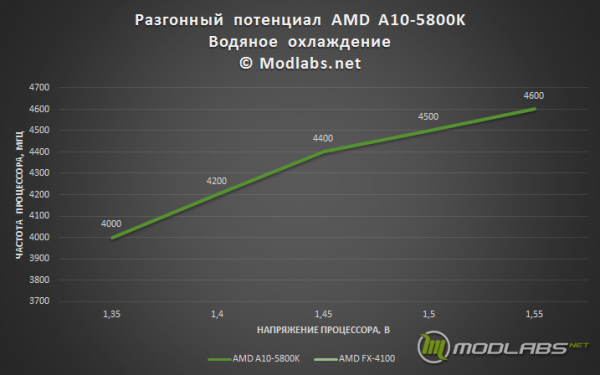
Using water cooling based on the water block D-TEK FUZION (https://www.modlabs.net/blogsmxs/ozhivljaem-d-tek-fuzion) The maximum overclocking level stopped at the following values:
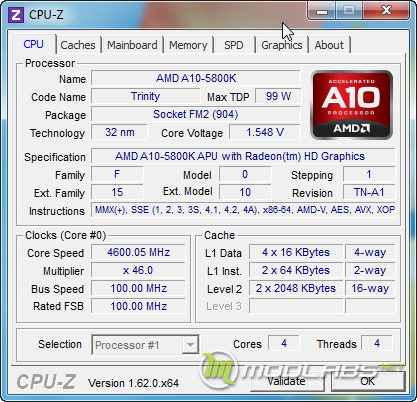
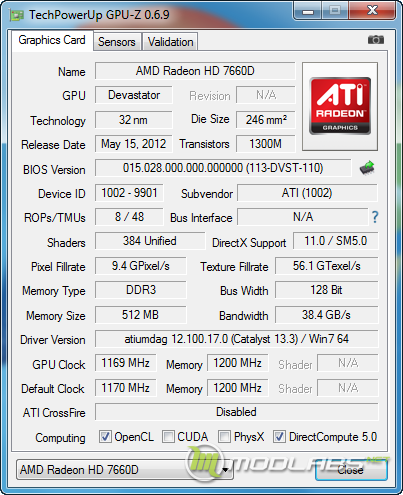
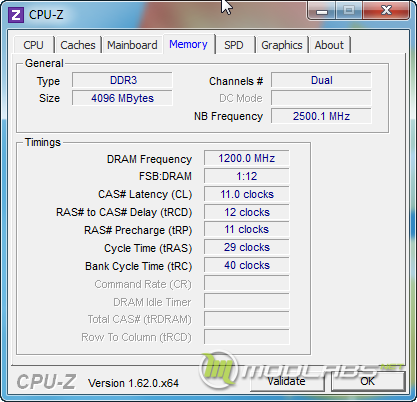
It raised quite a lot about how to correctly measure the temperature of AMD Trinity processors during testing during testing, I found that on one of the GPU-Z tabs there is a graphics kernel temperature sensor.This sensor showed very correct temperatures both during load and when the system was idle, it can be used as a guide to determine the temperature of the CPU.
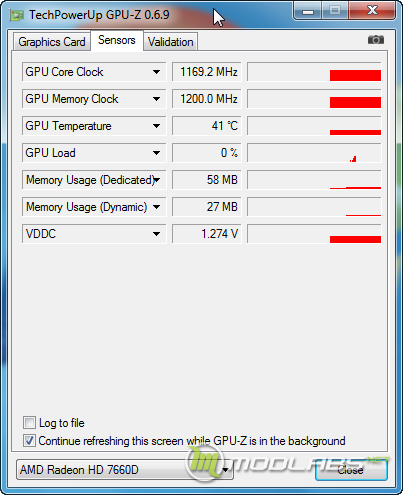
To study the performance gain from overclocking, the following list of test applications was selected:
- 3DMark 2006 x86 – CPU benchmarks;
- 3DMark 2011 x86 – Physics test;
- Cinebench R11.5 x64 – CPU;
- X264 HD Benchmark 5.01 x64;
- wPrime 2.09 x86;
- WinRAR 4.20 x64;
Synthetic and semi-synthetic 3D tests:
- 3D Mark 2006
- 3DMark 11 1.0.3.0
- 3DMark (2013)
- Metro 2033 DX11
- Batman Arkham City DX11
- Lost Planet 2 DX11
- Alien Versus Predator DX11
In all games, the resolution was 1920×1080 pixels, all the details available in the game options or benchmark settings (except 3DMark) were set to medium presets. For testing, the frequencies were set manually from the BIOS, all energy-saving functions were disabled. To minimize the error, each test was run three times, the tables show the arithmetic mean values.








I want to say that all manipulations with overclocking AMD A10-5800K on inefficient cooling almost do not give a tangible result. In our opinion, as part of a multimedia center, complete silence of the system is preferable, rather than 100-200 MHz to the processor frequency. For a system based on an AMD APU processor, we recommend overclocking the RAM, it is its frequency that gives a good performance boost.
Overclocking the AMD A10-5800K is definitely worth it in a complete system with good cooling! As you can see from the results, this allows you to achieve a significant increase in 3D applications, and in some situations can raise the FPS to the gaming level.
CPU scalping brings results, but this operation should be performed only if you know what it will bring you, will allow you to switch to a passive cooling system or increase the anti-aliasing parameter in your favorite game. Otherwise, it’s better to remember the saying “Don’t fix what works” a couple of times.
You can discuss the material on the forum or in our VKontakte and Facebook groups.
